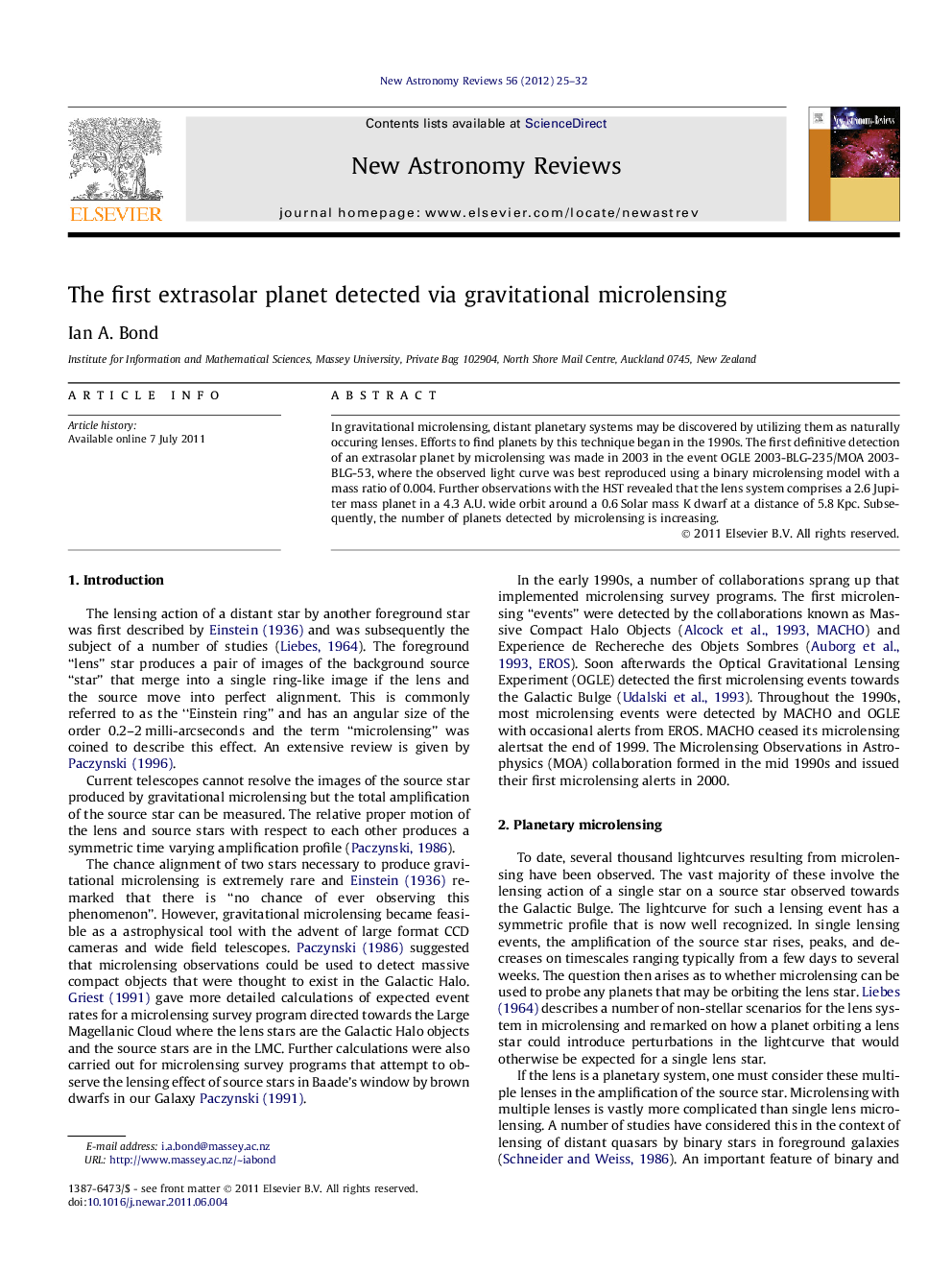| Article ID | Journal | Published Year | Pages | File Type |
|---|---|---|---|---|
| 1780014 | New Astronomy Reviews | 2012 | 8 Pages |
In gravitational microlensing, distant planetary systems may be discovered by utilizing them as naturally occuring lenses. Efforts to find planets by this technique began in the 1990s. The first definitive detection of an extrasolar planet by microlensing was made in 2003 in the event OGLE 2003-BLG-235/MOA 2003-BLG-53, where the observed light curve was best reproduced using a binary microlensing model with a mass ratio of 0.004. Further observations with the HST revealed that the lens system comprises a 2.6 Jupiter mass planet in a 4.3 A.U. wide orbit around a 0.6 Solar mass K dwarf at a distance of 5.8 Kpc. Subsequently, the number of planets detected by microlensing is increasing.
► The first detection of a planet by the microlensing technique. ► A 2.6 Jupiter mass planet orbiting a 0.6 Solar mass K dwarf. ► As of 2011, a total of 13 published discoveries of planets by microlensing.
